Volvo has always occupied a unique space in the automotive world. Hailing from Sweden, the brand has long stood apart from its European counterparts—not just because of its unshakeable commitment to safety, but because of the values it weaves into its design language.
Unlike the extravagance often associated with German luxury brands or the brash performance emphasis of American automakers, Volvo has forged its identity around restraint, comfort, functionality, and a distinctly Scandinavian aesthetic.
These principles are nowhere more evident than in the cabins of their vehicles. For many Volvo owners and enthusiasts, the interior of a Volvo is more than just a space—it’s a reflection of lifestyle and philosophy.
Over the decades, Volvo has delivered some truly timeless interiors. From the clean, calming lines of the XC90 and S90, to the utilitarian brilliance of the 240, Volvo has often been ahead of the curve in terms of both design and practicality. These cabins don’t just age well—they defy time.
They remain comfortable, stylish, and user-friendly even as trends in automotive design evolve. The best Volvo interiors are like well-designed Scandinavian furniture: minimal but warm, elegant without being flashy, and above all, built to last. These interiors reinforce the idea that luxury doesn’t always mean loud—sometimes, it means thoughtful.
But Volvo, like any long-standing automaker, has also had its missteps. As it experimented with expanding its lineup, appealing to younger buyers, and modernizing production, certain models suffered from compromised interior quality.
Whether due to cost-cutting, inconsistent materials, or rushed design decisions, some Volvos ended up with interiors that wore down quickly or failed to live up to the brand’s durable reputation.
These failures weren’t always immediately obvious—many of them were betrayed by long-term use. Door panels peeled, seat foam collapsed, buttons stopped working, and dashboards faded or cracked far too soon.
These issues left many loyal Volvo fans disillusioned, especially those who expected the same standard of longevity found in older models.
This article explores both the highlights and the low points of Volvo’s interior design history. In the first section, we’ll look at five Volvo models that exemplify what the brand does best—interiors that are not only beautiful but enduring.
These are cabins you’d want to spend hours in, and in many cases, decades. In the second section, we’ll dive into five models where the interior quality fell apart—either literally or metaphorically. These models serve as reminders that even the most principled automaker can falter when execution doesn’t match intention.
Whether you’re a die-hard Volvo enthusiast, a curious car buyer, or a student of automotive design, this article offers a deep look at what makes an interior truly timeless—and what causes it to fall apart.
In the process, we’ll examine how interior design, materials, and ergonomics intersect to create—or destroy—the everyday experience of owning a car. Volvo’s story is one of innovation and occasional inconsistency, and nowhere is that story more clearly told than through the spaces we sit in every time we drive.
Also Read: 5 Cars With Tire Sizes That Are Easy To Find And 5 That Cost A Fortune
5 Volvo Models with Timeless Interiors
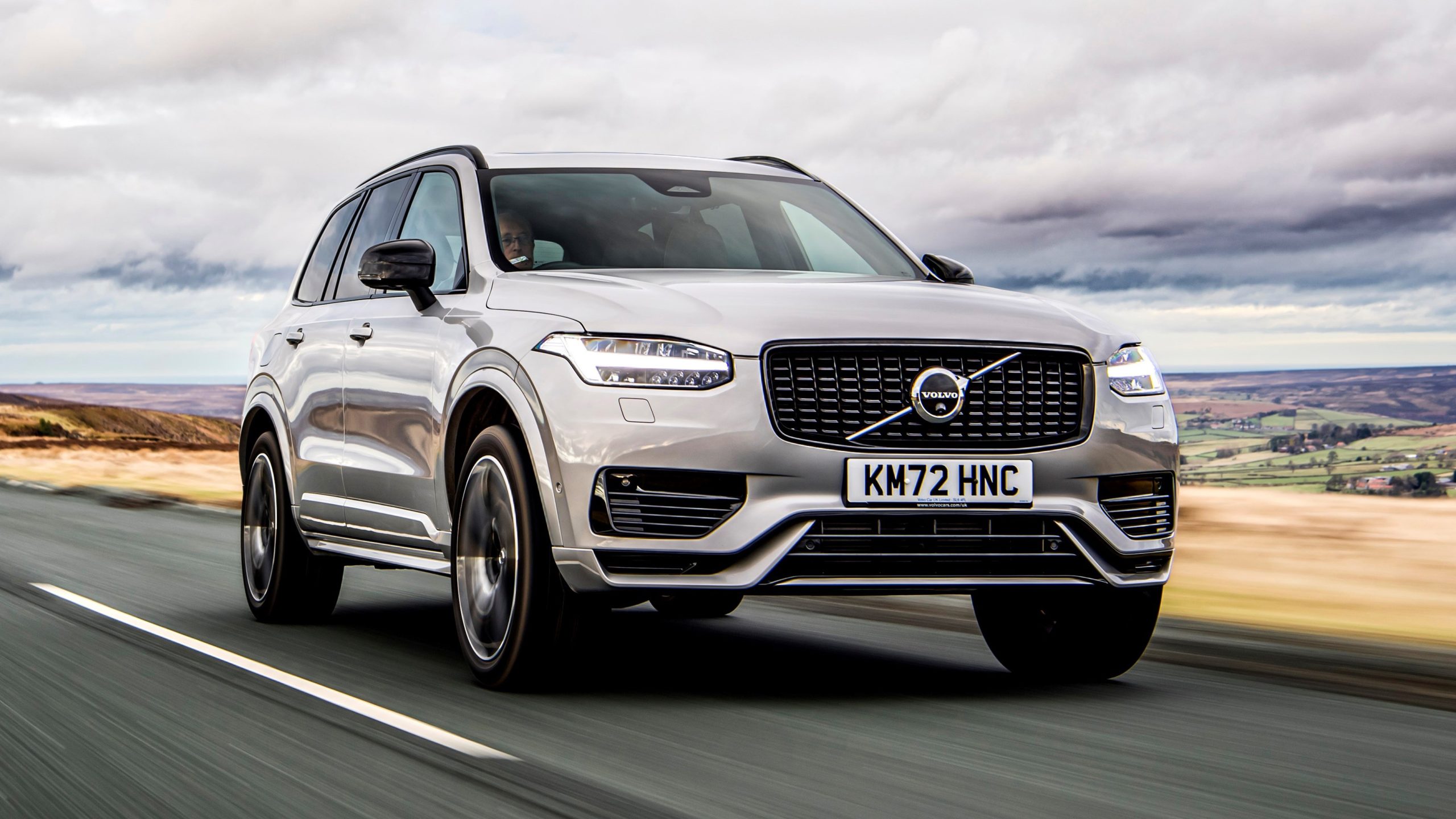
1. Volvo XC90 (Second Generation – 2015 to Present)
When the second-generation Volvo XC90 debuted in 2015, it didn’t just redefine Volvo’s design philosophy—it redefined what luxury meant in the SUV segment. Stepping inside the XC90 feels like entering a high-end Scandinavian boutique hotel.
The design is clean, minimalist, and heavily influenced by Nordic aesthetics—open spaces, light colors, and natural textures. One of the most striking elements is the vertical, tablet-style touchscreen at the center of the dash, part of Volvo’s Sensus infotainment system.
At a time when many brands were cluttering dashboards with buttons, Volvo went the opposite direction, offering a seamless, pared-down interface that still managed to be intuitive and responsive.
Real wood trims, brushed aluminum accents, and high-quality soft plastics reinforce the sense of thoughtful craftsmanship. The entire layout speaks not to opulence in the traditional sense, but to an intentional pursuit of calming, uncluttered beauty.
The seats are perhaps one of the most underrated luxury features of the XC90, and they embody Volvo’s traditional strength in ergonomics.
Unlike the overly padded, sink-in chairs found in some luxury cars, these seats are sculpted to support your spine over long distances. Wrapped in high-quality Nappa leather, they feel soft yet firm, balancing comfort and posture perfectly.
Even the second and third rows are impressively accommodating, with quality finishes that don’t fade as you move rearward—a rare thing in three-row SUVs.
Ambient lighting subtly frames the interior, adding an extra layer of sophistication when driving at night. Special touches like the Orrefors crystal gear lever in higher trims underscore how Volvo seamlessly blends function with luxury in this model.
What truly sets the XC90’s interior apart, and earns it a spot among the most timeless Volvo designs, is how well it has aged. A full decade into its production cycle, it still feels modern—almost futuristic—without ever resorting to gimmicks.
There’s no overload of flashy LEDs or busy trim work; instead, the XC90 remains quietly confident in its design, a rolling example of how simplicity, done right, becomes eternal.
As the automotive world increasingly turns toward electric and minimalist interior concepts, the XC90 remains not just relevant, but leading. Its interior is not just a place to sit—it’s a statement about how luxury can be both beautiful and serene, not just flashy or loud.

2. Volvo 240 (1974–1993)
The Volvo 240 may not be what first comes to mind when you think of “luxury,” but its interior exemplifies a kind of thoughtful, utilitarian elegance that has stood the test of time.
Unlike many cars of its era that chased gaudy styling trends, the 240’s interior was a study in Scandinavian practicality. From the boxy dashboard to the upright seating position, everything was designed with the user in mind.
The controls were intuitive, large enough to be used with gloves on (an important consideration for Swedish winters), and laid out with incredible ergonomic foresight.
While the plastics used may seem basic today, they were selected for durability, and the cabin’s minimal ornamentation gave it a surprisingly modern feel, free from clutter and distraction. The flat planes and geometric forms echo a mid-century modern design ethos, reflecting Volvo’s deep roots in functionality-first engineering.
Over the years, this no-nonsense approach has come to be seen as a virtue. Enthusiasts and design purists alike praise the 240’s cabin for its “honest” design—a term rarely used in today’s marketing-driven auto industry.
The upholstery, often available in simple cloth or rugged vinyl, was built to last. Many surviving 240s still have their original interior materials intact, a testament to their enduring quality.
The seats, while visually plain, are incredibly supportive, providing long-distance comfort that belies their austere appearance. The massive greenhouse-style windows allow plenty of light to pour in, giving the cabin an open, airy feel that’s uncommon in modern vehicles with thick pillars and cramped sightlines.
Perhaps the most impressive part of the 240’s interior legacy is how forward-thinking it was in terms of layout and functionality. The dashboard cluster remains one of the most legible in automotive history, with its large, clearly labeled gauges and warning lights.
It didn’t rely on gimmicks or flash; instead, it focused entirely on usability, something many modern cars have lost in a sea of touch-sensitive controls and complex menus.
The Volvo 240 may not compete with luxury sedans in opulence, but its interior achieves something far more lasting: it respects the user. It’s a space designed to be lived in and used, day after day, year after year—a timeless testament to Volvo’s core design principles.
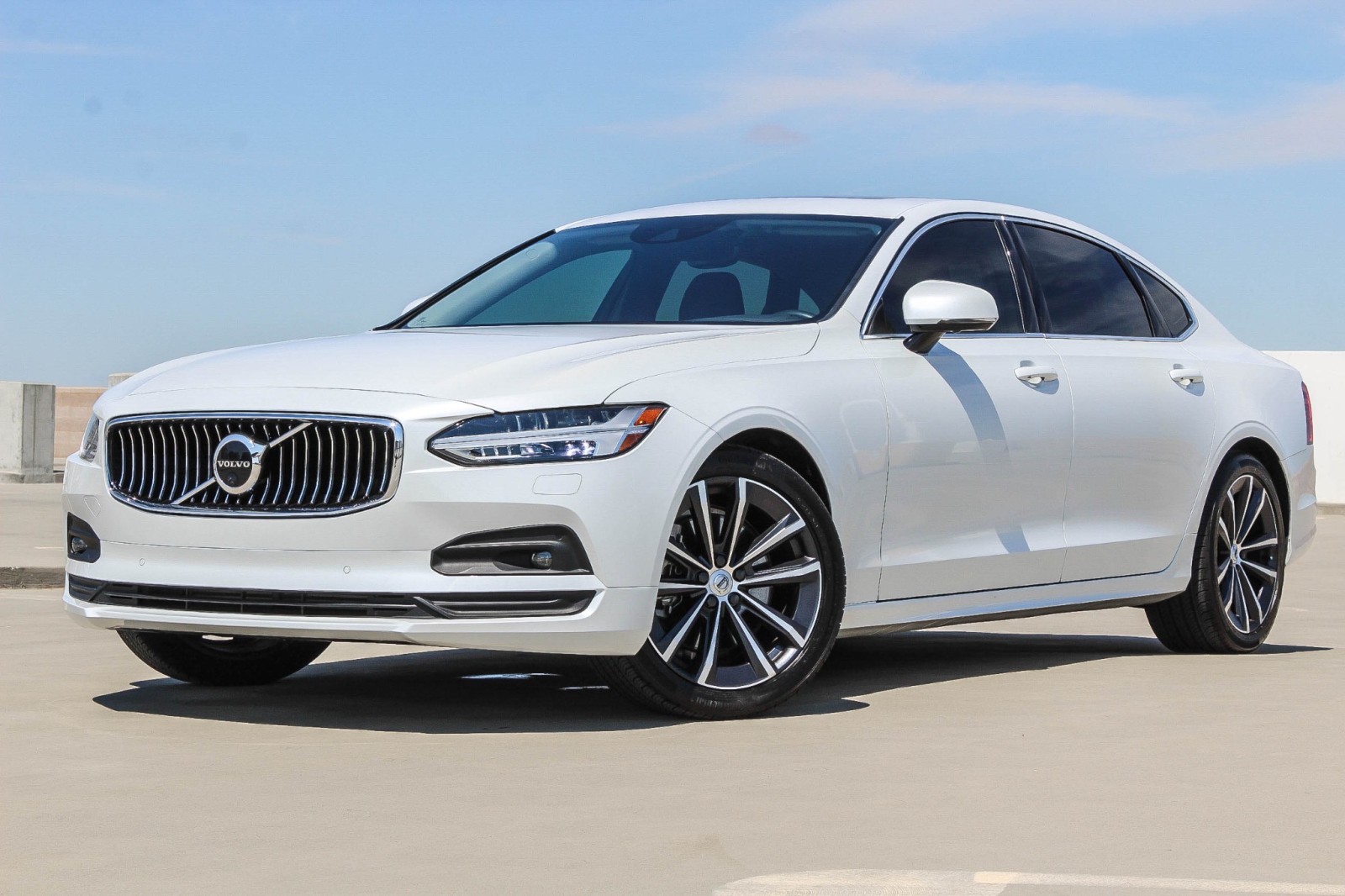
3. Volvo S90 (2017 to Present)
The Volvo S90 is a masterclass in contemporary automotive interior design, blending the traditions of Scandinavian minimalism with cutting-edge luxury. Unlike German competitors that often veer into clinical precision or sensory overload, the S90’s interior is calm, balanced, and deeply inviting.
The cabin exudes a sense of space, thanks in part to the horizontal lines that stretch across the dashboard and wide center console. Materials play a starring role here: open-pore wood trims, brushed aluminum, and rich leather upholstery come together in a harmony that’s both luxurious and tactile.
The vertical Sensus touchscreen is smoothly integrated, flanked by tasteful physical controls that keep the interface grounded and usable. This balance between digital and analog is key—it shows that Volvo understands when to embrace tech and when to let timeless design elements speak for themselves.
The seating in the S90 is quintessential Volvo—elegant, ergonomic, and comfortable to an almost therapeutic degree. These aren’t just seats; they’re sculpted thrones meant to support every contour of your body.
Even in the rear, passengers are treated to nearly the same level of comfort and craftsmanship, with ample legroom, supple materials, and thoughtfully placed climate and infotainment controls.
Noise isolation is another strength—the cabin feels like a cocoon on the road, allowing conversations to happen at whisper-level even at highway speeds.
Add to that the delicate ambient lighting, and the S90 begins to feel more like a lounge than a car interior. Every detail, from the stitching on the seats to the satisfying click of a knob, reinforces a commitment to refinement and composure.
The most impressive thing about the S90’s interior is how it avoids the trap of trendiness. Where other luxury sedans might rely on aggressive lighting schemes, busy dashboards, or tech gimmicks to appear futuristic, the S90 remains serene and grounded. It’s not designed to impress for a few months—it’s built to be admired for years.
Even as digital trends evolve and new touchscreen formats emerge, the S90’s balanced blend of tactile control and sleek digital interfaces continues to feel relevant.
It doesn’t just serve drivers—it soothes them. The S90’s cabin is a space where design, function, and tranquility converge, making it one of the most enduring and quietly spectacular interiors in Volvo’s portfolio.
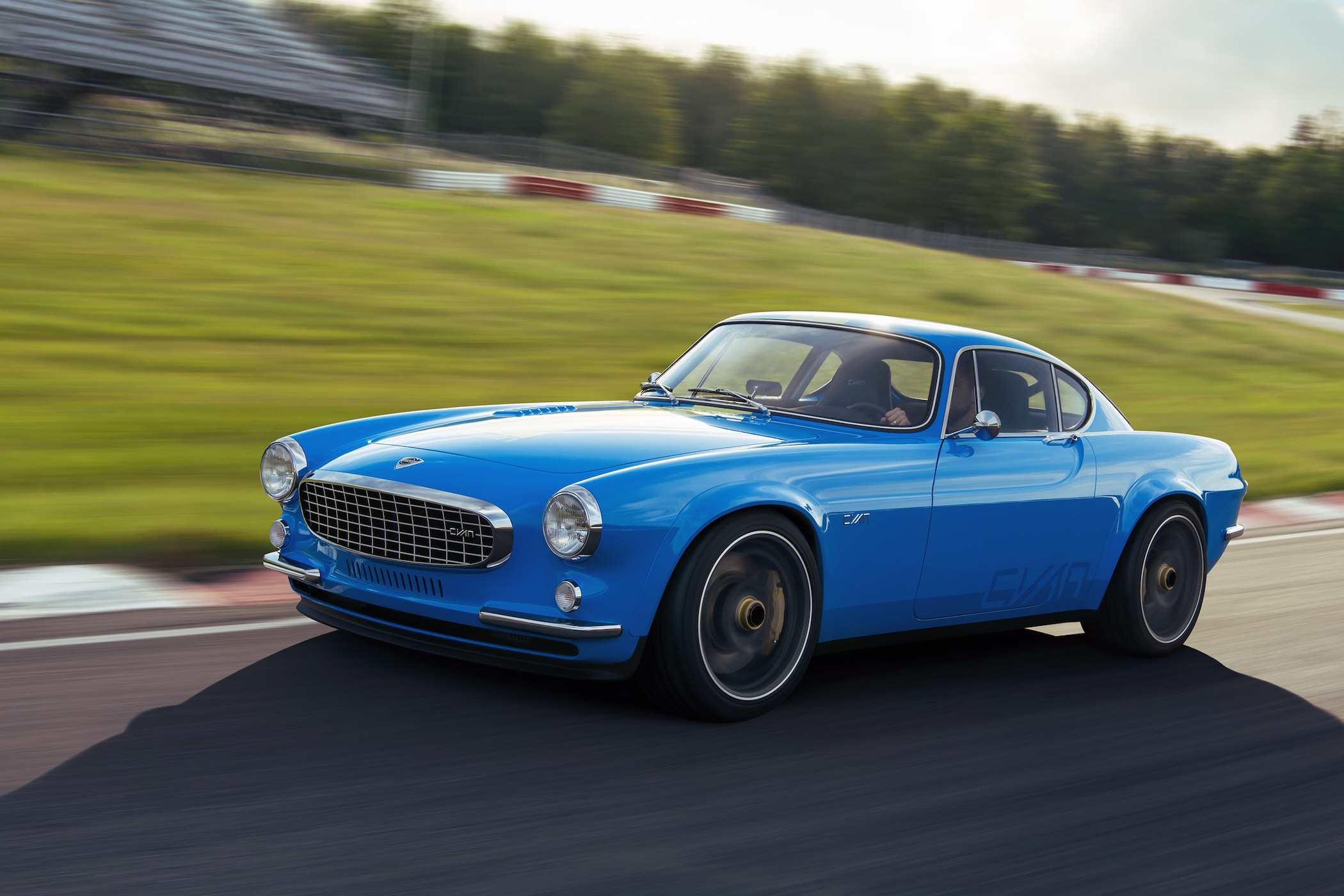
4. Volvo P1800 (1961–1973)
The Volvo P1800 stands out not only as a style icon of the 1960s but also as a profound design statement inside the cabin. At a time when many interiors were little more than utilitarian afterthoughts, the P1800’s interior dared to be dramatic, sporty, and richly appointed.
The dashboard design is a sweeping curve, with deeply recessed instrument clusters and jet-age chrome accents that captured the spirit of the era without succumbing to its excesses.
Each dial and switch was carefully placed, offering both aesthetic charm and tactile satisfaction. The leather-wrapped steering wheel, toggle switches, and intricate detailing gave drivers a sense of craftsmanship that few contemporaries could match. This wasn’t just a cabin—it was an experience.
The seats of the P1800 were a marvel in themselves. Bolstered and stylish, they offered a low-slung driving position that reinforced the car’s grand touring character. Many were finished in bold, expressive colors—red, white, navy—accentuated by piping and elegant stitching that gave the interior a touch of flair without tipping into flamboyance.
Even today, restorers and collectors cherish the original seat patterns and dashboard layouts because they exude a timeless charm. The compactness of the interior didn’t feel confining but rather purposeful—it wrapped around the driver and passenger like a tailored suit.
Add the chrome-trimmed knobs and minimalist center console, and the P1800 felt like something between a sports car and a piece of designer furniture.
Its lasting appeal, however, stems from more than just beauty—it’s about identity. The P1800 interior doesn’t look like anything else from its time, nor does it feel dated even now. While the technology is, of course, vintage, the cohesion of the materials, the clarity of design, and the emotional resonance make the P1800’s cabin a true classic.
It’s a space that reflects the optimism of its era but with the restraint and sensibility that would come to define Volvo as a brand. For enthusiasts and casual admirers alike, the P1800 remains a shining example of how interiors can be bold, beautiful, and enduringly stylish.
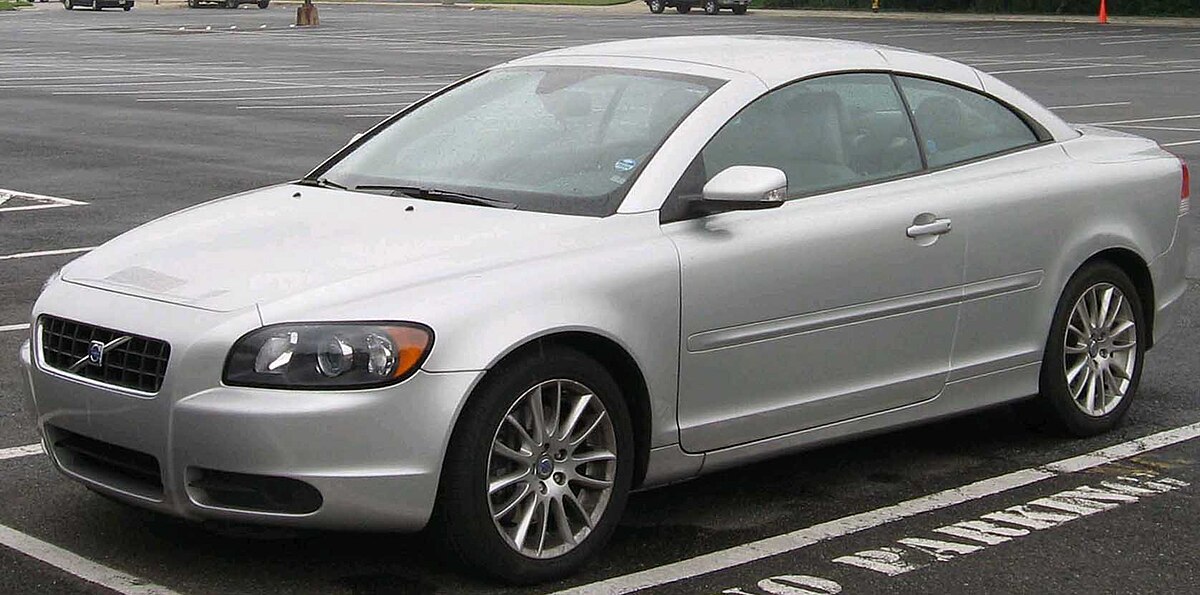
5. Volvo C70 (First Generation – 1997–2005)
The first-generation Volvo C70 marked a significant departure for the brand. Developed in collaboration with Tom Walkinshaw Racing (TWR), it was Volvo’s answer to the growing demand for personal luxury coupes and convertibles. The interior of the C70
embraced this shift, offering a dramatically more refined and emotionally appealing space than any other Volvo of its time. Gone were the Spartan aesthetics of earlier models; in their place was an elegantly sculpted dashboard, soft-touch plastics, supple leather, and tasteful use of real wood trim.
The center console flowed naturally into the dash, creating a cockpit-like feel that still managed to be open and inviting. The design showed a clear intent to court drivers looking for more than just functionality—it aimed to deliver aesthetic pleasure.
What made the C70’s interior stand out wasn’t just its materials, but its mood. Whether you opted for the coupe or the convertible, the interior felt like a sanctuary. The seats were among the best Volvo had ever made—plush yet supportive, with broad bolsters and excellent lumbar support.
The convertible variant in particular featured additional interior refinements, like special insulation and anti-glare treatments, to maintain a premium experience even with the top down.
The design prioritized comfort and quiet, traits not always associated with soft-top vehicles. Instrumentation was clean and elegant, with classic white-on-black gauges and soft backlighting that added a touch of class, especially in low-light driving.
Though its tech may now feel dated, the C70’s cabin remains a pleasure to sit in because it was built around human experience, not just features. The careful integration of analog controls, the consistency in material quality across all surfaces, and the focus on driver comfort give the interior a timeless character.
It may not dazzle with digital screens, but it never needed to. The C70 was about presence, feeling, and enjoyment—qualities that transcend era or trends.
Even today, a well-kept C70 interior can impress in ways that few late-90s cabins can. It was a turning point for Volvo, and it stands as proof that the brand could do more than just safe—it could do stylish, soulful, and enduring.
5 Volvo Models with Interiors That Fall Apart
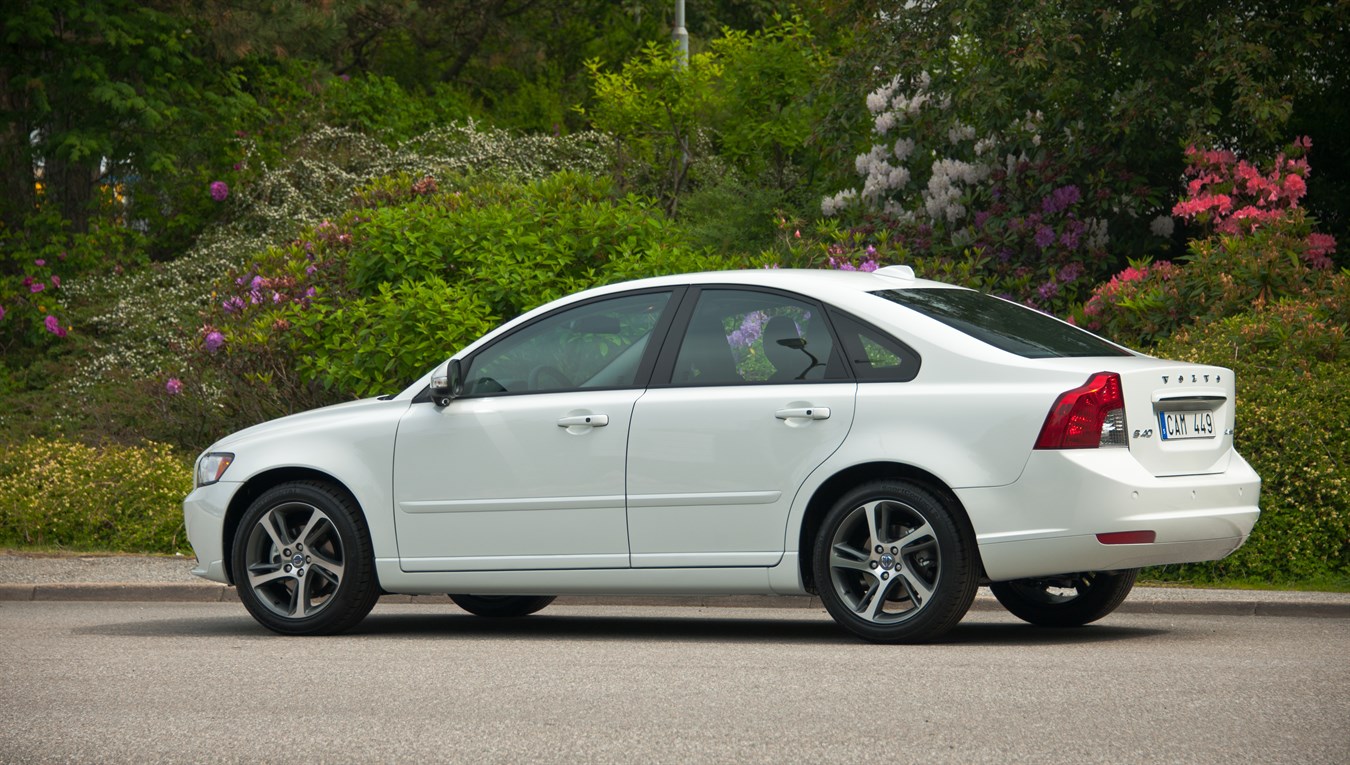
1. Volvo S40 (First Generation – 1995–2004)
The first-generation Volvo S40, co-developed with Mitsubishi and assembled in the Netherlands, represented an attempt by Volvo to break into the compact executive segment with an affordable and globally marketable vehicle.
While it performed reasonably well mechanically, its interior left much to be desired and, over time, proved itself prone to wear, degradation, and poor longevity. Upon its release, the cabin felt serviceable but uninspired.
The dashboard plastics were hard, hollow-sounding, and quick to scratch. Unlike the plush materials found in Volvo’s higher-end models, the S40’s interior felt like a cost-cutting exercise, with components that didn’t stand the test of time. Armrests wore quickly, door panels became loose, and switches had a cheap, flimsy feel.
Beyond aesthetics and touchpoints, the ergonomics of the cabin also raised issues. The center stack layout was cramped, with oddly shaped buttons that became sticky and unreliable after several years. HVAC knobs and window switches commonly broke or failed electrically, making routine use an exercise in frustration.
Even the seats, a traditional Volvo strength, lacked the robust support or material quality that drivers had come to expect. The synthetic leathers and low-end cloth options aged poorly, developing cracks and discoloration relatively quickly under moderate use.
Rear seat padding often sagged over time, and headliner fabric was notorious for detaching, especially in warmer climates. What cemented the S40’s first-generation interior as one that “falls apart” is how poorly it aged compared to Volvo’s traditional standards.
While other Volvos from the same era might develop character with age, the S40 simply fell into visible decline. Rattles developed in the dashboard and door cards, adhesive failures were common, and fading plastics robbed the cabin of any original charm it might have had.
Owners frequently found themselves dealing with cosmetic and functional deterioration far earlier than expected, forcing repairs or resign themselves to a degraded experience. The S40 tried to bring Volvo to a new audience, but its underwhelming interior execution only managed to undermine the brand’s longstanding reputation for durability and comfort.

2. Volvo 850 (Base Trims – 1991–1997)
The Volvo 850 is often celebrated for ushering in a new era for Volvo—introducing front-wheel drive, a modern chassis, and improved performance. However, the base trims of the 850 suffered from an interior that, while innovative at launch, rapidly revealed a litany of quality control issues.
While higher trims featured leather and wood accents, the lower-spec models were stuck with brittle plastics, ill-fitting trim panels, and cloth seats that disintegrated alarmingly fast.
Door panel materials were thin and often delaminated, while the dashboard frequently cracked under sun exposure, even in temperate climates. Early models, in particular, lacked proper UV protection, which accelerated the aging process of interior components.
Even more frustrating than the visual decay was the inconsistency in build quality. While some parts of the cabin felt over-engineered, others appeared rushed or outsourced. Air vents often broke with minor use, glove compartments sagged and failed to latch properly, and the climate control buttons had a notorious tendency to pop off.
The 850’s instrumentation was advanced for its time, but the backlighting faded, pixels in the digital displays died, and owners were often left with dead displays or incorrect readings.
Perhaps most disappointing were the seats—once lauded for ergonomics, they began to wear poorly in base trims, losing support, tearing at seams, and suffering foam collapse over time. In colder regions, the heated seat elements failed en masse.
What stung the most about the 850’s interior degradation was the sense of betrayal. Volvo had long held a reputation for over-engineering its interiors, making them last longer than virtually anything else on the road. But the 850 base trims didn’t uphold that legacy.
Instead, they showed clear signs of corner-cutting—be it to save weight, reduce production costs, or rush the car to market. This contrasted sharply with the brand’s image, creating disillusionment among owners who had expected better.
While mechanically the 850 proved robust, its interior wore its years poorly, serving as a reminder that even storied automakers can sometimes compromise where it matters most—on the surfaces drivers touch and see every day.

3. Volvo C30 (2006–2013)
The Volvo C30 was a bold and youthful design aimed at a younger demographic, and its distinctive styling, especially the glass hatch, was praised for its innovation. However, the interior, while visually modern and even futuristic in its minimalist layout, failed to live up to the Volvo standard in terms of durability and refinement.
The “floating” center console, for example, was innovative and aesthetically interesting, but the plastic it was made from quickly wore down. Fingerprints, scuffs, and scratches accumulated easily, and over time, the silver-finished panels often faded or chipped.
The fit and finish gave off an appearance of quality, but, in practice, suffered from short-lived materials that dulled with age. Another significant issue lay in the choice of interior fabrics and leathers.
Entry-level trims often came with cloth that degraded quickly with use. Even the higher-spec leather options had a plasticky feel and were prone to creasing, splitting, and fading, especially in areas exposed to sunlight.
The seat bolstering collapsed over time, and even the headrests lost their shape. Panels inside the C30 were also infamously squeaky. On rough roads, rattles developed early in ownership and worsened as the vehicle aged.
These noises, often from the doors or rear hatch area, were difficult to isolate and fix, leaving owners to endure an increasingly noisy ride. That’s particularly disappointing in a car marketed as a premium compact hatchback.
The C30’s downfall in interior quality is particularly unfortunate because the car had so much potential in terms of design appeal. It was fun, different, and stood out visually among its more conservative peers. But over time, its cabin betrayed the impression it initially gave.
The materials simply weren’t up to the task of withstanding long-term wear, and the cool design touches felt more like showpieces than practical elements. As a result, the C30 interior aged prematurely, robbing it of the premium aura Volvo tried so hard to inject.
Many owners, initially drawn in by the car’s sleek interior and futuristic look, ended up frustrated by its inability to maintain that appeal with use. In the end, the C30 served as a cautionary tale: innovative design must be backed by enduring quality, or the charm quickly fades.
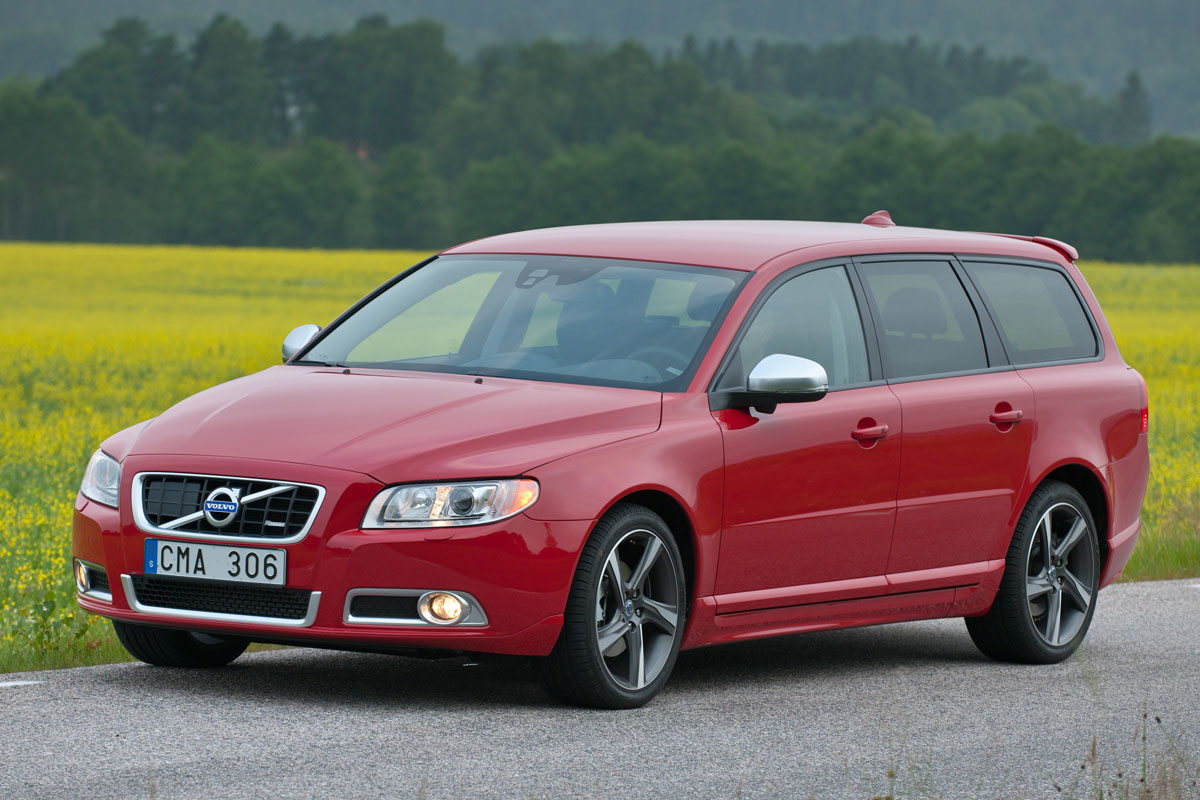
4. Volvo V70 (Second Generation – 2000–2007)
The second-generation Volvo V70 was an ambitious update to one of Volvo’s most beloved wagons, offering a sleeker design, modernized infotainment, and an improved driving experience.
But for all its mechanical improvements and strong performance, the interior quality, particularly in mid- to lower-trim models, struggled to live up to the brand’s traditional strengths.
One of the most frequently cited issues was the rapid deterioration of interior plastics. Dashboards faded, cracked, and warped under heat. Door handle surfaces peeled and became sticky, especially when exposed to consistent sunlight. Buttons on the center stack often wore off within a few years, leaving illegible controls that frustrated users daily.
This wear and tear wasn’t just cosmetic. The build quality inconsistencies led to functional issues as well. Climate control knobs would detach, power seat modules failed, and the plastic components in seat adjustment mechanisms often broke under normal use.
The leather used on seats in many variants was of noticeably lower quality compared to the generation before, leading to accelerated wear, cracking, and seam splitting.
Headliner sag was another chronic issue, especially in humid climates, and once it began to droop, it often spread quickly throughout the vehicle. Combined with the notorious dashboard rattles and squeaky trim pieces, the cabin began to feel more like a well-used appliance than a high-end European family car.
The V70’s interior failure is particularly painful because of how beloved its predecessor was for its ruggedness and longevity. The first-gen V70 interiors held up incredibly well, making the shortcomings of the second generation even more glaring.
For loyal Volvo customers, it felt like a step backward—one that undermined the confidence they had placed in the brand’s commitment to quality.
These flaws weren’t always apparent at purchase, but emerged gradually, turning what should have been a long-term ownership experience into an expensive and frustrating maintenance journey.
Ultimately, while the V70 may have improved in handling and engine performance, its cabin fell behind, eroding the trust of long-time Volvo enthusiasts in a key area they had come to expect excellence.
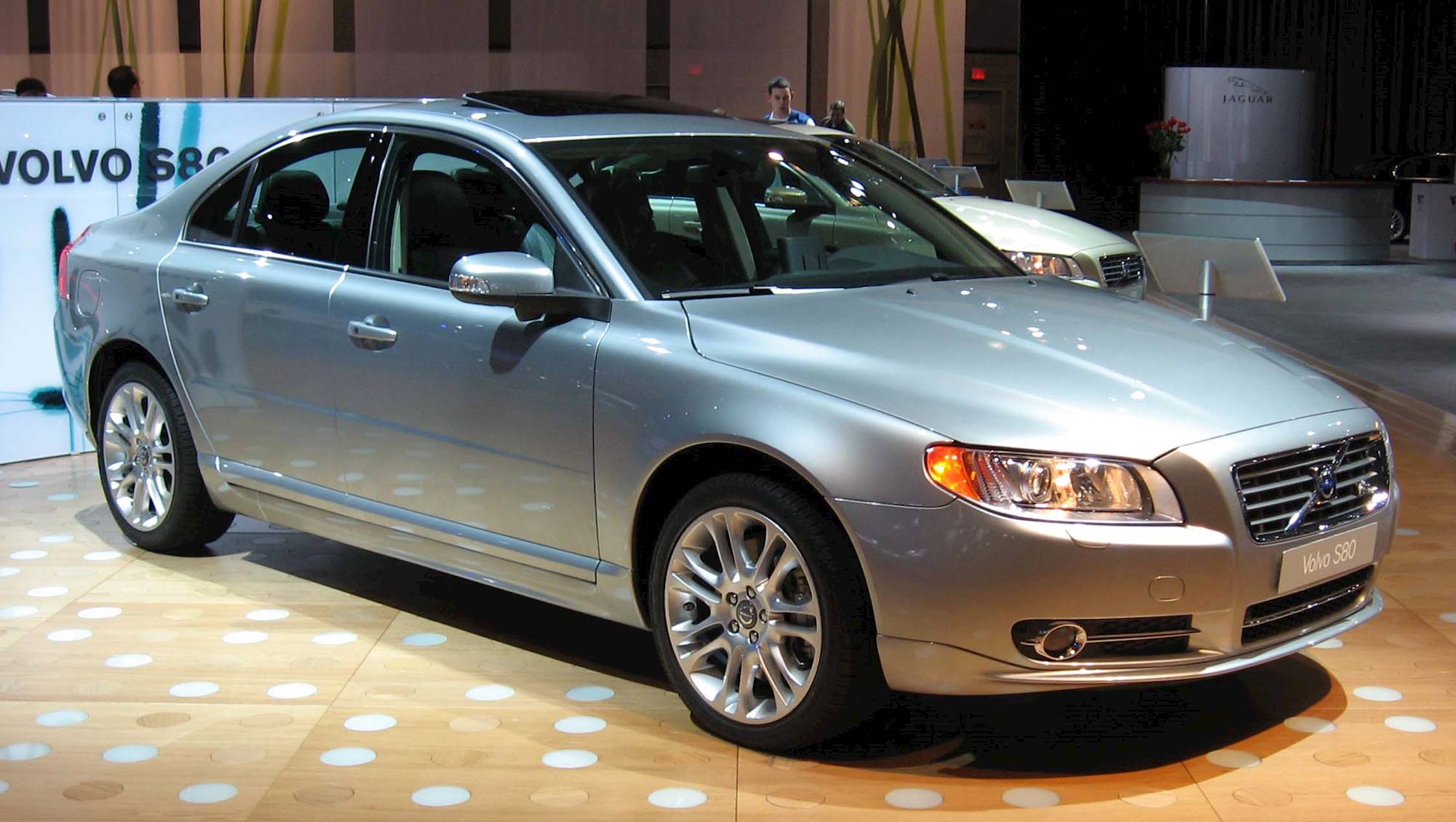
5. Volvo S60 (Second Generation – 2010–2018)
The second-generation Volvo S60 arrived with high expectations. It had a sleeker, more aggressive exterior, improved performance, and a tech-forward image meant to compete directly with German rivals like the BMW 3 Series and Audi A4. Initially, the interior looked the part—sleek center console, leather seats, and a driver-focused layout.
But after the honeymoon period ended, many owners found themselves disappointed by how quickly the interior began to show signs of deterioration.
Soft-touch materials on the dashboard and doors began to degrade, often peeling or bubbling in warmer climates. The silver and aluminum-look trims lost their luster quickly, with frequent reports of chipping, scuffing, and general wear far earlier than one would expect in a car of this class.
Electrical issues also plagued the cabin components. From malfunctioning window switches to glitchy infotainment units, the car’s interior electronics often became a source of frustration. The Sensus system, while attractive and initially functional, lacked the long-term robustness and user-friendliness to stand up to daily use.
It aged poorly both visually and functionally, with laggy responses and incompatibility with newer devices. The steering wheel controls became unresponsive in some cases, and the seat heating systems often failed after a few years.
As with other problem interiors, rattles and creaks became common companions on even modestly worn models, with the dashboard and A-pillar trims being frequent offenders.
Where the S60 truly fell short was in meeting the expectations that Volvo itself had set. This was supposed to be a premium offering—a return to form that could attract new customers and satisfy long-standing fans. But the cabin quality simply didn’t support those ambitions.
It may have had the look of a high-end interior, but it didn’t have the durability or tactile satisfaction to back it up. Compared to earlier Volvo sedans, which often aged gracefully, the second-gen S60 cabin lost its charm quickly, making the car feel older than it was.
In the long run, the second-gen S60 became a lesson in how superficial upgrades without lasting quality can leave a sour taste—and a broken dashboard.
Also Read: 5 Cars with Bulletproof Electronic Systems and 5 That Short Out Easily
Volvo’s history is a fascinating study in contrasts—innovation and tradition, elegance and utility, consistency and experimentation. Nowhere is this duality more evident than in the interiors of its vehicles.
For a company that built its reputation on safety and durability, the interior design choices it made over the years have played a pivotal role in shaping how the brand is perceived.
At their best, Volvo interiors have delivered a rare harmony of comfort, style, and functional beauty. At their worst, they have fallen victim to cost-cutting measures, rushed production, and misguided design choices that undermined the trust of even the most loyal customers.
The five models we highlighted for their timeless interiors demonstrate Volvo’s unique ability to fuse aesthetics with human-centered design. Cars like the XC90, S90, 240, P1800, and even the often-overlooked C70 show that a vehicle cabin can be more than just a functional space. These interiors reflect a deep understanding of how people live with their cars.
They offer thoughtful ergonomics, high-quality materials, and calming environments that make the driving experience enjoyable, even memorable. These models prove that when Volvo leans into its Scandinavian design heritage and commits to quality, the results are interiors that not only stand the test of time but often improve with age.
On the other hand, the models that suffered from falling-apart interiors—like the S40, base-trim 850, C30, second-gen V70, and second-gen S60—serve as cautionary tales. In trying to expand market share or appeal to different demographics, Volvo sometimes lost sight of its core identity.
These cars may have had promise, and in many ways succeeded mechanically or aesthetically, but their cabins revealed deeper issues. Poor material selection, fragile switchgear, and short-lived finishes plagued these interiors, leading to a disappointing ownership experience.
They weren’t just letdowns because they wore poorly—they were letdowns because they contradicted the very principles Volvo is known for. What’s most compelling is how clearly these successes and failures speak to the importance of interior design in the long-term value of a car.
Many buyers can overlook a sluggish infotainment system or even a bland exterior, but when an interior begins to degrade, it directly impacts daily life. It becomes a visible and tangible flaw that erodes the emotional connection to the vehicle.
Volvo’s best interiors foster that connection—they invite you in, they take care of you, and they hold up under the passage of time. The worst ones, unfortunately, do the opposite: they alienate and disappoint, turning potential lifelong fans into frustrated critics.
In recent years, Volvo has returned to form with models that once again emphasize design integrity and interior longevity. The shift toward electric platforms like the EX90 and the C40 Recharge also brings renewed focus on material sustainability and user-focused layouts.
As Volvo moves forward, it seems to be rediscovering the qualities that made its interiors special in the first place. This balance between modern innovation and timeless design is not easy to achieve, but Volvo has proven, when it gets it right, no one else does it quite the same. The interiors tell the story—and it’s one worth paying attention to.
